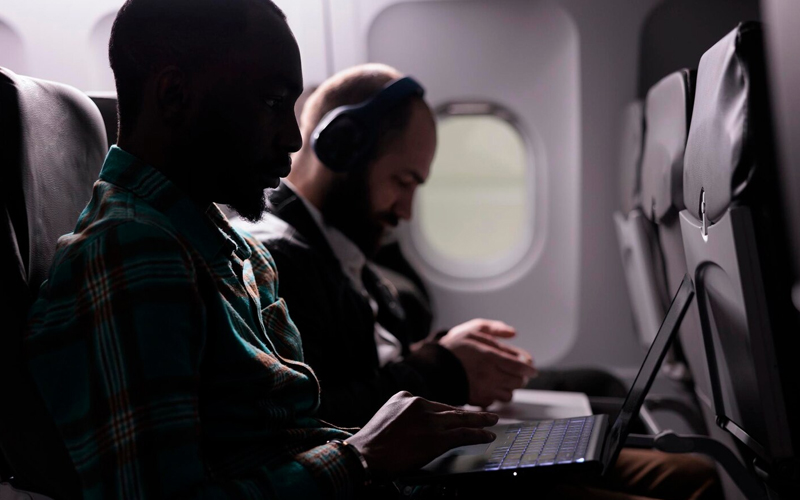
Aviation safety is strictly regulated, with every detail meticulously analyzed to minimize risks.
The development of current procedures has been significantly influenced by numerous investigations of aviation accidents.
Aviation Rules
Most aviation rules pertain to takeoff and landing, and a glance at the statistics reveals why: these phases are when most accidents occur.
If you’ve ever traveled by plane, you know there are several basic rules to follow to ensure safety and an enjoyable journey without any unwanted incidents.
These rules change over the years and vary by airline, but they generally remain consistent.
Passengers are required to occupy their assigned seats as indicated on their boarding passes, fasten their seat belts when necessary, straighten their seatbacks, raise their tray tables, behave appropriately towards other passengers and crew members, stow their luggage properly, and refrain from excessive alcohol consumption, reports CNN.
Another crucial rule is that passengers are asked to raise their window shades during takeoff and landing, and the cabin lights are dimmed during these maneuvers.

Though these measures may seem trivial, they have a significant impact on the safety of passengers and crew in emergency situations.
The primary reason is the strict safety measures applied on board. If an incident occurs during takeoff or landing, your eyes will already be adjusted to the outside light, allowing for quicker and better response in an emergency.
Aircraft are designed and tested for all types of situations, and the crew is trained to ensure everyone can evacuate safely in an emergency.
For example, according to basic rules, the evacuation of an aircraft in an emergency should not take longer than 90 seconds, whether during day or night flights, states the Lonely Planet guide.
If you find yourself in an emergency, do not ignore the cabin crew’s instructions.
Why Window Shades Are Raised During Takeoff and Landing
It is particularly important to note that most aviation incidents occur during takeoff or landing.
In such emergencies, the aircraft needs to be evacuated, and passengers and crew need to see which part of the aircraft is safest for evacuation.
Raising the window shades helps the crew decide which exit doors can be used in an emergency evacuation.
Flight attendants’ seats are often positioned backward, and in an incident, it helps if the crew can quickly and easily see both inside and outside the aircraft.
If the window shades were not raised, rescue teams would not be able to see what is happening inside the aircraft. Essentially, rescuers outside would not be able to detect smoke or fire inside the cabin. Now you know, it’s always better to keep the shade up during takeoff and landing maneuvers.
Remember, this is not just for your safety.
“From an aviation safety perspective, raised shades help passengers orient themselves to the situation,” experts from the Flight Safety Foundation told CN Traveler.
Additionally, your flight may be more enjoyable when you take in the views of various airports and geographical locations you fly over, though this is a secondary benefit.
Why Cabin Lights Are Dimmed During Takeoff and Landing
Besides the requirement to raise window shades, the ambient light in the cabin is dimmed during takeoff and landing. Have you ever wondered why the cabin light intensity is significantly reduced during these phases?
This measure is not just for creating a pleasant atmosphere for passengers but also has a scientific explanation. But what is the purpose of this rule?
Reducing light intensity during the day is less necessary but saves some engine power as the plane goes through the steps of the takeoff procedure. Less stress on the engines means the aircraft can shorten the takeoff roll and soon lift off.
Apart from these technical explanations, the primary reason for dimming the cabin lights is safety in emergencies.
Experts say it can take up to 30 minutes for human eyes to fully adjust to a dark environment, according to Aviation File.
Under these conditions, dimming the ambient light allows passengers’ and crew members’ eyes to get used to natural light, whether it is day or night.
This way, no one in the plane suffers from a temporary shock due to changing light conditions, which could delay or even prevent timely evacuation procedures due to poor visibility and panic among passengers. At night, evacuation procedures could be disrupted because our eyes need several seconds to adjust to low light. In an emergency, very bright light to which eyes are not adjusted can disorient both passengers and crew.
Under low light conditions, emergency lighting and illuminated exit paths inside the aircraft are more visible.
Lastly, dimmed cabin lights improve the pilot’s visibility at night. Bright cabin lights create a glare effect, making it difficult to see runway lights and potential obstacles. Better visibility for the pilot means smoother landings and takeoffs.


